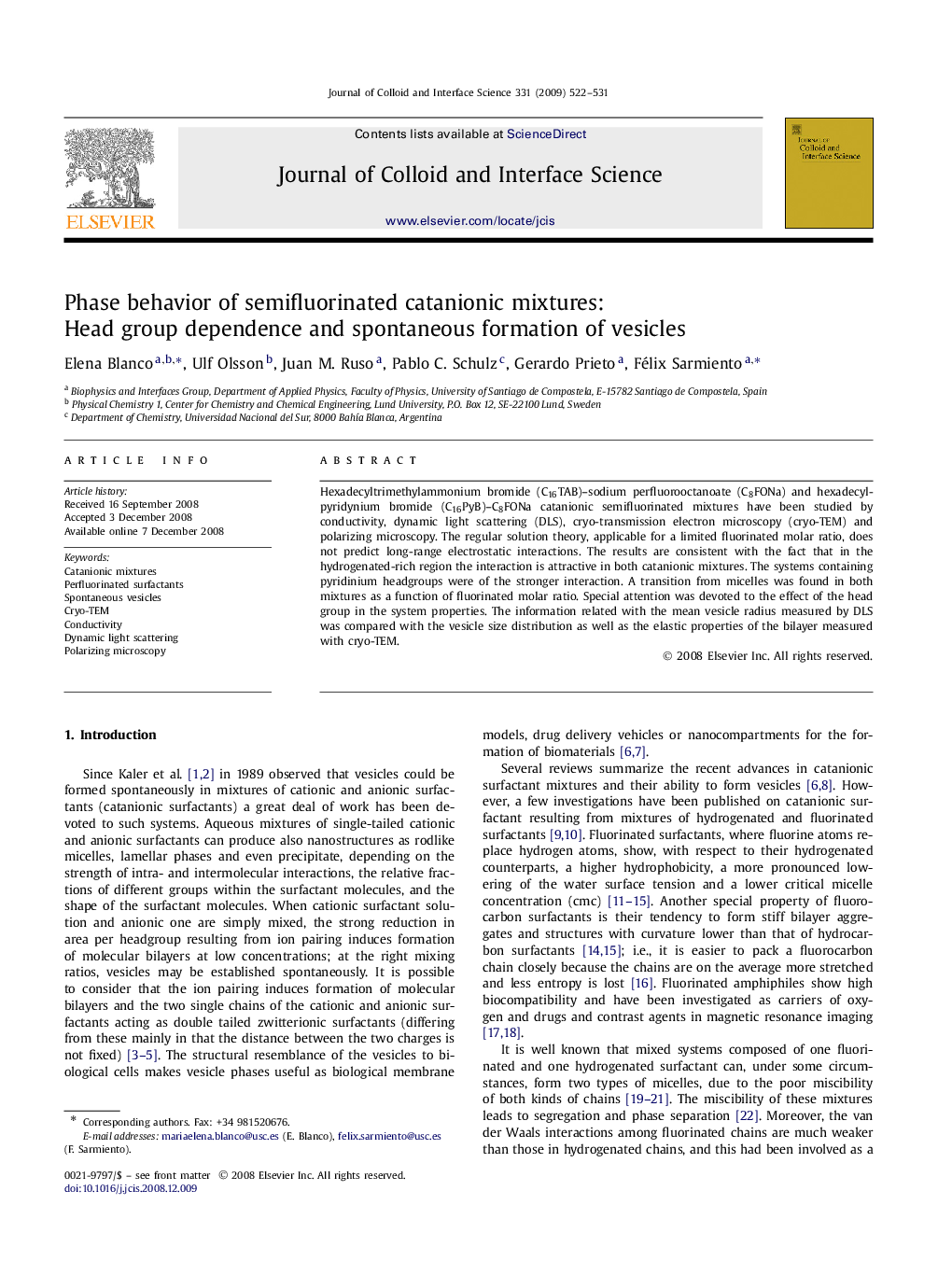| Article ID | Journal | Published Year | Pages | File Type |
|---|---|---|---|---|
| 610854 | Journal of Colloid and Interface Science | 2009 | 10 Pages |
Hexadecyltrimethylammonium bromide (C16TAB)–sodium perfluorooctanoate (C8FONa) and hexadecylpyridynium bromide (C16PyB)–C8FONa catanionic semifluorinated mixtures have been studied by conductivity, dynamic light scattering (DLS), cryo-transmission electron microscopy (cryo-TEM) and polarizing microscopy. The regular solution theory, applicable for a limited fluorinated molar ratio, does not predict long-range electrostatic interactions. The results are consistent with the fact that in the hydrogenated-rich region the interaction is attractive in both catanionic mixtures. The systems containing pyridinium headgroups were of the stronger interaction. A transition from micelles was found in both mixtures as a function of fluorinated molar ratio. Special attention was devoted to the effect of the head group in the system properties. The information related with the mean vesicle radius measured by DLS was compared with the vesicle size distribution as well as the elastic properties of the bilayer measured with cryo-TEM.
Graphical abstractFigure optionsDownload full-size imageDownload as PowerPoint slide
